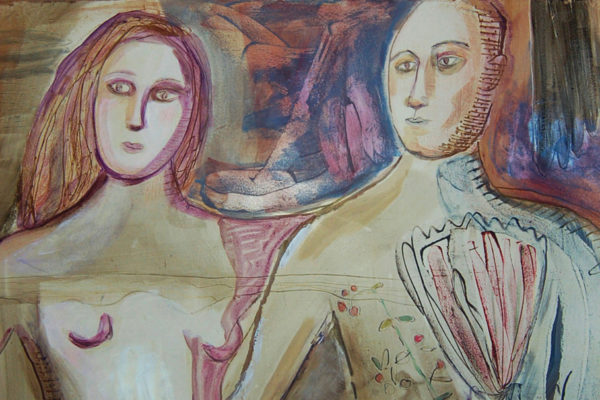Continued (page 4 of 4)
“In the mid- to late-1800s traders saw the flat dolls Hopi had left behind as offerings to the spirits and thought they could make money selling them,” Patty explains. “It was a bartering system and they started trading with the Hopi. As the Hopi went from nomads to a more sedentary lifestyle they spent more time carving. Flat dolls developed feet and arms and the carvers got better and better.”
Contemporary katsinas came about as a way for Hopi carvers to make money selling to Anglos, while traditional katsinas saw a surge in popularity in the 1930s and 1940s. About 20 years ago, “new traditionals” hit, largely due to carver Manuel Denat Chavarria Jr. Patty says the most popular katsinas are Eagle, who communicates with the gods, and Sunface, who harnesses the sun’s power. Patty says customers will come to Kachina House looking for katsinas that will bring love or money, but those dolls don’t exist.
“Katsinas bring food, warmth, fertility of crops and people, sun, rain, and health,” she says. “Corn Maiden brings corn and harvest, things we don’t think about. We think about putting gas in our car.”
Hopi carvers stop by Kachina House on a regular basis with dolls for sale – Patty, Toby, and Judy rarely go up to the reservation unless it’s to attend a ceremony. Though some carvers don’t like the fact that Kachina House sells Navajo kachinas, Patty says Navajo dolls should not be dismissed completely.
“Basically, the Navajo took the tradition from the Hopi and use manufactured pieces,” Patty explains. “They have no spiritual meaning – they are souvenir dolls. But they are less expensive than Hopi dolls. Some collectors start with Navajo dolls and work up to Hopi pieces – not everyone can afford a Jaguar or Mercedes, and in this shop we have something for everyone. But we do keep the Navajo and Hopi katsinas separate.”
The Hopi aren’t the only tribe to use katsinas in religious ceremonies – the Zuni also carve but, Patty says, she’s never heard of Zuni katsinas being sold to the outside world. With demand up dramatically in recent years, fake katsinas from China have hit the market, and some knock-offs are skillfully done; Kachina House had three in house before they realized it. “Before long fake katsinas will be as common as fake jewelry,” Toby says.
The best advice Patty, Toby and Judy can offer is to buy from reputable dealers and educate yourself. Becoming knowledgeable is a major part of the Kachina House experience – during our visit, Toby was leading a group on a tour of all the rooms. The women also advise customers to buy katsinas because they are meaningful to them, rather than as an investment. “Buy it because you love it, not because you think it will be worth something 20 or 30 years from now,” says Patty. “No one knows which ones will be worth the most.”
Kachina House
2920 Hopi Dr. in West Sedona
928-204-9750
www.kachinahouse.com
Kachina House Recommended Reading:
Traditional Hopi Kachinas, by Jonathan S. Day
Following the Sun and Moon, by Alph H. Secakuku
MORE NATIVE AMERICAN ARTISTS: Navajo silversmiths, Acoma potters, Navajo weavers, Hopi potters, jewelers and basket makers, Zuni jewelers and a stone-fetish carver, Navajo sandpainters



